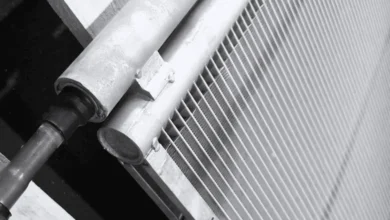A Guide to Commercial Temperature Monitoring Technology
Do you need to learn more about commercial temperature monitoring?
If you’re reading this article, the answer is probably yes, even if you think you know a bit already. There are so many reasons that temperature monitoring is essential for a business. Everything from FDA regulations, shipping safety, and quality assurance comes into play.
But why is this the case?
Well, that’s what this article is here to explain. Let’s get right down to the bottom of commercial temperature monitoring!
What Is Commercial Temperature Monitoring?
Commercial temperature monitoring is an essential aspect of many businesses that deal with products that can be spoiled by temperature changes. The most common products that can be spoiled by temperature changes are obviously foods.
But there are many, many more industries for which temperature monitoring is essential.
What are the main areas in which commercial temperature monitoring is essential?
Commercial Refrigerators and Freezers
Here, we are talking about your basic fridges and freezers at actual shop locations. These might be anything from grocery stores to restaurants.
Industrial Settings
There are many industries for which the temperature of the production process is critical. Beer manufacturing facilities and meat abattoirs are good examples here.
Shipping and Transport
There are also many dynamic settings in which temperature control is non-negotiable. For example, when we ship foods from one country to another, they need to be kept at a low temperature so they won’t go off.
But, closer to home, delivery vans and trucks also need to be fitted with temperature monitors so that products stay fresh for deliveries or domestic transportation.
Warehouses and Transition Depots
Lastly, when products are being moved from place to place, it’s critical they can be temporarily stored at the right temperature along the way. So, modern warehouse technology always includes temperature monitoring for those products that need it.
Essential Temperature Monitoring Technologies
Okay, so now we have the rundown of what commercial temperature monitoring is, as well as the essential areas in which it is needed. But how does it work in practice?
Well, we need to look at the specific technologies being used throughout industries at the moment to understand this. So, let’s take a look at the key pieces of tech that are on the market right now.
Fridge and Freezer Alarms
One of the most straightforward technologies required in many industries is an alarm for either a fridge or freezer. These alarms work by immediately sounding when the room or storage container they are being used in dips below a certain temperature.
A commercial freezer temperature alarm is a relatively simple device, but it can save thousands of dollars worth of product each time it’s required.
Wireless Temperature Monitoring
When it comes to refrigerator or freezer monitoring, you can’t always be in the room with the stock. That’s why you need to be able to monitor and control temperatures remotely.
For example, if you are a business owner and you go home for the day, you want to be notified if the temperatures in your storeroom are getting out of whack. Also, you want to be able to fix the situation without having to go back into town and fix it manually.
Wireless refrigerator monitoring does the trick.
Thermal Buffer
Next, you have the issue of temperatures in refrigerated areas being quickly altered when doors open and the like. This is where a thermal buffer comes in.
This piece of technology will make sure that temperatures do not swing out of control when the temperature monitors sense a short-term change. This is critical because fridges and freezers can over-cool their contents if they think the temperature has risen when a door opens.
It’s not just about keeping things from warming up too much!
Self-Monitoring Containers
As we rely more and more on global supply chains, we have developed a lot of technology to keep goods safe in transit. One of the great developments in this area is the idea of a “smart” shipping container.
A smart shipping container can monitor its internal temperature and adjust itself all the way through a long transit. Add that to automated ships that can load and unload themselves and you are on your way to a seriously high-tech supply chain!
Data Storage and Analysis
Another really “cool” (don’t mind the pun) aspect of temperature monitoring in the modern age is data analysis.
These days, as storerooms, fridges, and containers become digital, we can gather lots and lots of data in real-time. This is important for temperature monitoring because temperatures need to be recorded and maintained over long periods.
So, with data backups on hand, we can check that goods have been maintained at appropriate levels in storage. Also, with the addition of artificial intelligence, it’s now possible to use temperature information to create new and better ways of transporting and storing perishable goods.
For example, AI allows us to see what environmental factors contributed to fluctuations in storage temperatures, and this can teach us lessons about how to refrigerate more effectively.
Internet of Things
Lastly, one of the coolest technologies involved in the temperature monitoring game is the internet of things. The internet of things refers to the idea that all sorts of digital devices in an industrial setting can be connected and coordinated.
Monitor Now, Before It’s Too Late
Now you’ve got a good understanding of how temperature monitoring works and what the essential technologies are that are being used today. But the last thing to remember is that, with temperature monitoring, you want to have the technology in place before any issues arise.
The unforeseeable is going to come along one day and mess with your fridges and freezers. Having the right temperature monitoring technology in place could save you thousands, if not more!
If you’ve found this information useful, why not check out some of our other great articles on commercial topics?






